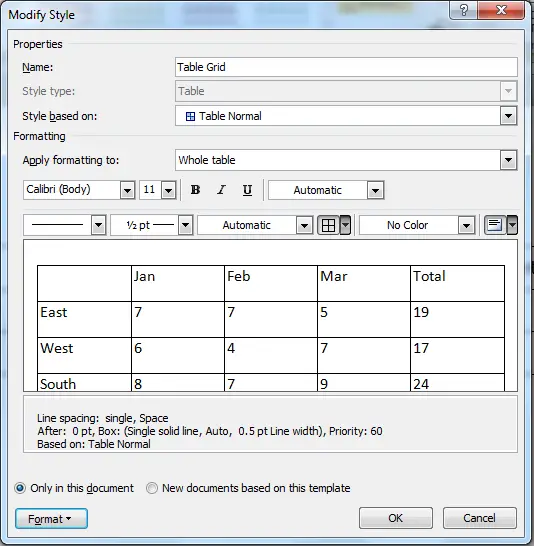

Select Columns in the Page Setup group.Enter appropriate Alt text only in the Description field (not the Title field).Īlways use true columns.Select the Layout & Properties icon and choose Alt Text.Right-click on the image and select Format Picture.This text is read by a screen reader in a Word file and should remain intact when exporting to HTML or PDF. Images can be given appropriate alternative text in Word. Headings 1, 2, or 3 can also be assigned using ⌘ + Option + 1, 2, or 3, respectively.Open the Home tab, and choose the appropriate heading in the Styles panel.Start a new line to create a heading, or select text to change to a heading.This allows screen readers to navigate a document and improves accessibility for everyone.

Heading StylesĬreate a uniform heading structure through use of styles in Word.
#Keep table rows and header together word for mac 2011 pdf#
To do so, either click somewhere within the single paragraph or select the consecutive paragraphs, then launch the Paragraph dialog (perhaps the simplest method, the keyboard shortcut Alt O, P, works in all recent versions of Word), click the Line and Page Breaks tab, click to check the option(s) you wish to enable, then click “OK” to save your settings.This resource is designed to be printed as a one page PDF file. You can apply one or more of these options to a single paragraph or to consecutive paragraphs. NOTE: This post is a revised and shortened version of a tutorial about the Paragraph dialog that appears in both my Word 2007 book and my Word 2010 book. Of course, you can achieve a similar result by pressing Ctrl Enter (the keyboard shortcut for Page Break).

When this option is checked (enabled), Word will insert a page break before the paragraph to which the setting has been applied. “ Page break before” means exactly what it sounds like. You might have to select the entire document, or several paragraphs, and then uncheck that option. If you apply the setting only to the heading, it will keep the heading together with the blank line but it won’t keep the blank line together with the text immediately below.ĬAUTION: “Keep with next” sometimes causes text to move around within your document for no apparent reason! If text won’t stay where you type it, put the cursor into one of the meandering paragraphs, open the Paragraph dialog, and look to see whether “Keep with next” is checked. Note, however, that you usually have to apply the “Keep with next” setting to both the heading and the blank line below the heading, because Word considers the blank line a separate paragraph that requires its own formatting. People typically use this setting to keep a heading on the same page as the body text that comes after the heading. That is, when “Keep with next” is checked (enabled), Word will attempt to keep the paragraph to which the setting has been applied in close proximity to the subsequent paragraph, and if the subsequent paragraph is on the next page, Word will bump the current paragraph to the next page, as well. “ Keep with next” also differs from “Keep lines together.” Whereas “Keep lines together” refers to the lines of a single paragraph, “Keep with next” refers to two successive paragraphs. Instead, it moves the paragraph down so that either (1) the last two lines of the paragraph appear at the top of the following page or (2) the entire paragraph begins on a new page. With “Widow/Orphan Control” checked (enabled), Word will allow paragraphs to split across pages, but won’t permit a single line of a paragraph to dangle by itself at the top or bottom of a page. Note that this choice is different from Widow/Orphan Control. When the option is checked (enabled), if the whole paragraph won’t fit at the bottom of one page, Word bumps it to the next page. In other words, you use this setting to avoid splitting a paragraph across pages. Thus, “ Keep lines together” tells Word to maintain the entire paragraph-all of its lines-as one unit on a single page. That means that each option applies to an entire paragraph. It is worth remembering that these formatting options are part of the Paragraph dialog box. In this post, I briefly explain the four main options on the Line and Page Breaks tab: “Widow/Orphan Control,” “Keep with next,” “Keep lines together,” and “Page break before.” Word’s Paragraph dialog box consists of two tabs: (1) Indents and Spacing (by default, this tab is at the forefront of the dialog) and (2) Line and Page Breaks.


 0 kommentar(er)
0 kommentar(er)
